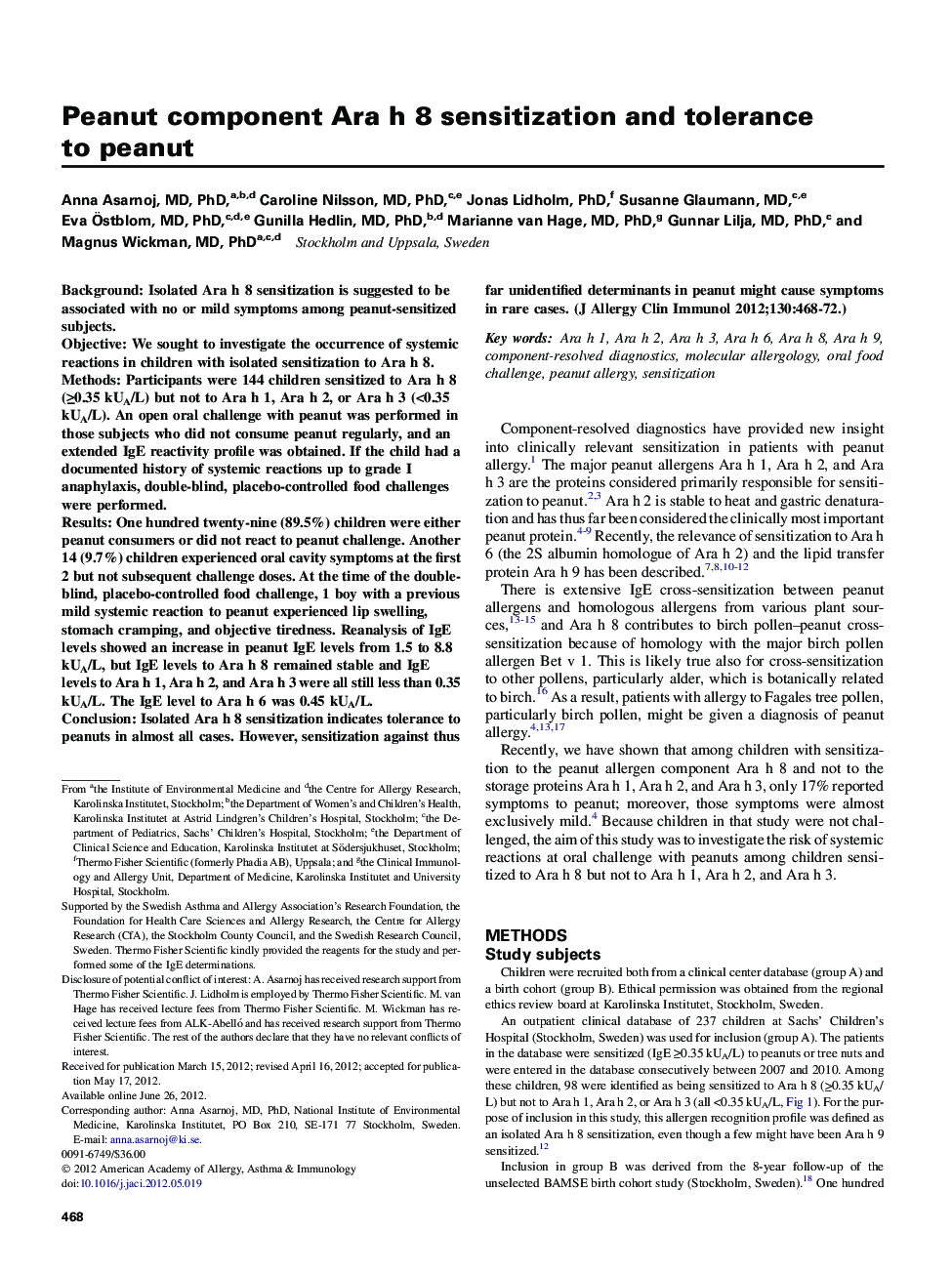| Article ID | Journal | Published Year | Pages | File Type |
|---|---|---|---|---|
| 3198430 | Journal of Allergy and Clinical Immunology | 2012 | 5 Pages |
BackgroundIsolated Ara h 8 sensitization is suggested to be associated with no or mild symptoms among peanut-sensitized subjects.ObjectiveWe sought to investigate the occurrence of systemic reactions in children with isolated sensitization to Ara h 8.MethodsParticipants were 144 children sensitized to Ara h 8 (≥0.35 kUA/L) but not to Ara h 1, Ara h 2, or Ara h 3 (<0.35 kUA/L). An open oral challenge with peanut was performed in those subjects who did not consume peanut regularly, and an extended IgE reactivity profile was obtained. If the child had a documented history of systemic reactions up to grade I anaphylaxis, double-blind, placebo-controlled food challenges were performed.ResultsOne hundred twenty-nine (89.5%) children were either peanut consumers or did not react to peanut challenge. Another 14 (9.7%) children experienced oral cavity symptoms at the first 2 but not subsequent challenge doses. At the time of the double-blind, placebo-controlled food challenge, 1 boy with a previous mild systemic reaction to peanut experienced lip swelling, stomach cramping, and objective tiredness. Reanalysis of IgE levels showed an increase in peanut IgE levels from 1.5 to 8.8 kUA/L, but IgE levels to Ara h 8 remained stable and IgE levels to Ara h 1, Ara h 2, and Ara h 3 were all still less than 0.35 kUA/L. The IgE level to Ara h 6 was 0.45 kUA/L.ConclusionIsolated Ara h 8 sensitization indicates tolerance to peanuts in almost all cases. However, sensitization against thus far unidentified determinants in peanut might cause symptoms in rare cases.
